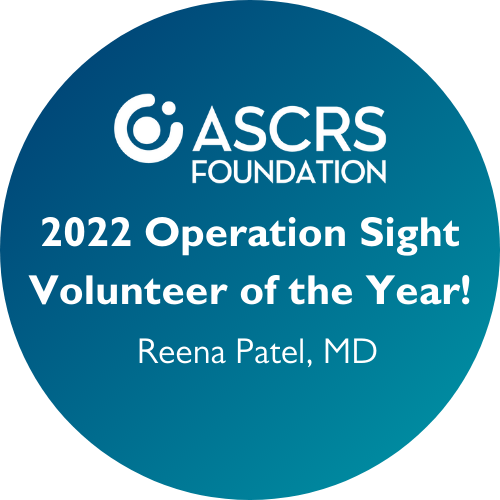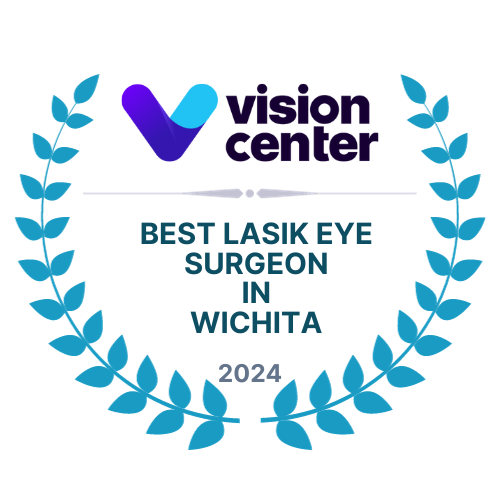
iDesign LASIK candidates usually have many questions about the procedure and what to expect from the surgery. Find the answers to the most commonly asked LASIK questions below. Also, to find out more about LASIK, please download this link from the American Academy of Ophthalmology Is LASIK for Me? A Patient’s Guide to Refractive Surgery.
What is LASIK?
LASIK is a popular laser vision correction procedure that is performed to reduce a person’s dependence on glasses or contact lenses. iDesign LASIK stands for laser-assisted in situ keratomileusis. LASIK can treat nearsightedness (myopia), farsightedness (hyperopia), and astigmatism. Over 30 million people have had LASIK worldwide. LASIK improves the focusing power of the eye by reshaping the cornea with a laser. LASIK is a relatively quick, painless outpatient procedure that lasts only a few minutes per eye. LASIK patients may experience an almost-immediate improvement in their vision after surgery.
Is LASIK safe?
Yes, iDesign LASIK is a safe procedure. Over 30 million people have had LASIK worldwide. LASIK was first approved for use by the U.S. Food and Drug Administration (FDA) in 1998. The lasers at Wichita Vision Institute have been approved by the FDA for safety.
How much does LASIK cost?
The cost of LASIK varies depending on certain factors, which include:
- Technology being used
- Amount of laser ablation needed
- Whether one or both eyes are being treated
- Whether a custom treatment is being performed
Dr. Patel and her laser vision correction staff will provide a customized LASIK quote during your personal consultation with her.
How much does a LASIK consultation cost?
Initial LASIK consultations are free at our Wichita, KS office.
Does LASIK hurt?
No. LASIK is not a painful procedure. Most patients feel no pain except a little pressure during iDesign LASIK surgery. Patients are given medication to relieve any anxiety and numbing anesthetic drops prior to LASIK surgery.
How much time will I need to take off from work?
Most patients are able to return to work a day or two after their LASIK surgery, but this varies by patient. You may need to take several days off before resuming your normal work schedule. Dr. Patel will discuss this with you during your pre-operative consultation.
What happens during LASIK surgery?
Prior to entering our specially-designed laser suite, you will be given some relaxation medicine. You will lie down on a bed, and receive anesthetic eye drops. Throughout your procedure, Dr. Patel will explain each step of surgery prior to performing it.
A numbing anesthetic drop will be placed in your eyes. Your eyelids will be cleaned off. Dr. Patel will then position your head underneath the laser and place a retractor in your eye to prevent you from blinking during the procedure. She will then use either an instrument called a microkeratome or a femtosecond laser to create a thin flap in your cornea. You will not feel anything except for maybe a little bit of pressure. After folding the flap back, she will direct the laser at the underlying corneal tissue and reshape the cornea. You may hear a clicking noise and notice a slight odor, which is completely normal. After Dr. Patel has achieved the desired corneal shape, she restores the flap to its original position, where it acts like a natural bandage and seals itself.
You will be escorted to your recovery room to relax for a little bit before your companion drives you home to rest. You should notice an improvement in your vision pretty quickly, and it will continue to improve over the next few weeks.
How long does treatment take?
LASIK typically takes about 10 minutes from start to finish, per eye.
Am I a candidate for LASIK?
Dr. Patel will help you determine whether you are a suitable candidate for LASIK. In general, appropriate candidates are over the age of 18, have a steady prescription (i.e., no changes in the past year), are in good health, do not suffer a degenerative or autoimmune disorder, and are not pregnant or nursing. Before determining that you are a suitable LASIK candidate, Dr. Patel will perform a thorough examination of your eyes and ask you multiple questions about your vision and visual needs.
If I have another eye condition, am I still eligible for LASIK?
Patients with certain eye conditions such as macular degeneration, cataracts, etc. are not good candidates for LASIK. Dr. Patel can discuss your medical conditions and alternatives at your LASIK consultation at our Wichita office.
What are the risks of LASIK?
LASIK complications are rare, but do occur. Dr. Patel will discuss these with you prior to surgery.
What is all-laser LASIK?
All-laser LASIK or blade-free LASIK refers to a LASIK procedure in which a laser is used to perform both steps of the procedure: making the corneal flap and reshaping the underlying corneal tissue. A femtosecond laser is used in the former step and an excimer laser in the latter. Neither procedure is any “better” than the other, but they differ in terms of recovery time, expense, discomfort, risk of complications, quality of vision, and potential discomfort.
Will I need to follow up with Dr. Patel after my LASIK surgery?
Yes, you will need to return to Wichita Vision Institute the day after your procedure for Dr. Patel to check your progress. She will lay out the schedule of follow-up visits at your LASIK consultation.
What if my vision regresses after LASIK?
The chances of this happening are very rare, but if your vision gets worse after LASIK, you may need enhancement. Dr. Patel can speak to this in more detail during your consultation.
Will I be able to drive after LASIK?
You will need to have a friend or loved one drive you home after your procedure. As soon as you are able to see clearly, you may resume driving, as long as it is not the day of your surgery.
When can I resume wearing eye makeup?
You can start to wear eye makeup about a week after your procedure. Using brand-new products will decrease the chance of infection.
What if I am not a candidate for LASIK?
Dr. Patel may determine that you are not a candidate for LASIK. You may be eligible for PRK surgery. She will discuss your surgical options, if any, at your complimentary consultation after performing a thorough examination.
What is PRK?
PRK, or photorefractive keratectomy, is a procedure that can correct nearsightedness, farsightedness, and astigmatism. During PRK, Dr. Patel loosens the epithelium of the cornea (the top layer of the cornea) and then reshapes the corneal tissue with the excimer laser. A special medication is then placed on the corneal surface to prevent haze. A bandage contact lens in then placed on each eye to help with the healing process.
What is the difference between LASIK and PRK?
LASIK and PRK are both laser vision correction procedures that correct refractive errors such as nearsightedness, farsightedness and astigmatism. The difference between the two procedures is in the way Dr. Patel accesses the corneal tissue to reshape it. During LASIK, she uses a microkeratome or a femtosecond laser to create a small flap in the cornea. With PRK, Dr. Patel loosens and removes the top layer of the cornea (it eventually grows back). LASIK patients usually enjoy quicker visual stability and less discomfort after surgery compared to PRK patients. The vision improvement with PRK is more gradual. PRK is usually recommended to patients who do not qualify for LASIK because they have thin corneas or dry eyes.
Will I attain 20/20 vision after LASIK?
It is possible that you will achieve 20/20 vision after iDesign LASIK surgery. Most people achieve 20/20 vision after LASIK surgery and nearly all patients achieve 20/40 visual acuity or better. According to the American Academy of Ophthalmology, 90 percent of LASIK patients achieve somewhere between 20/20 and 20/40 vision after surgery. However, as with any surgery, we cannot guarantee that you will have the same results or a specific result.
To find out more about LASIK, please download this link from the American Academy of Ophthalmology Is LASIK for Me? A Patient’s Guide to Refractive Surgery






